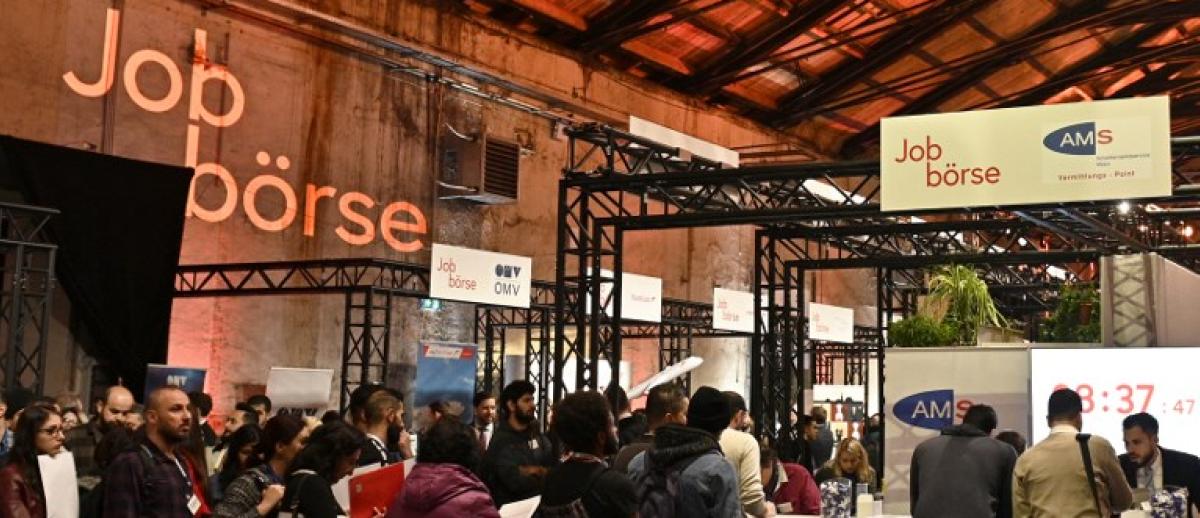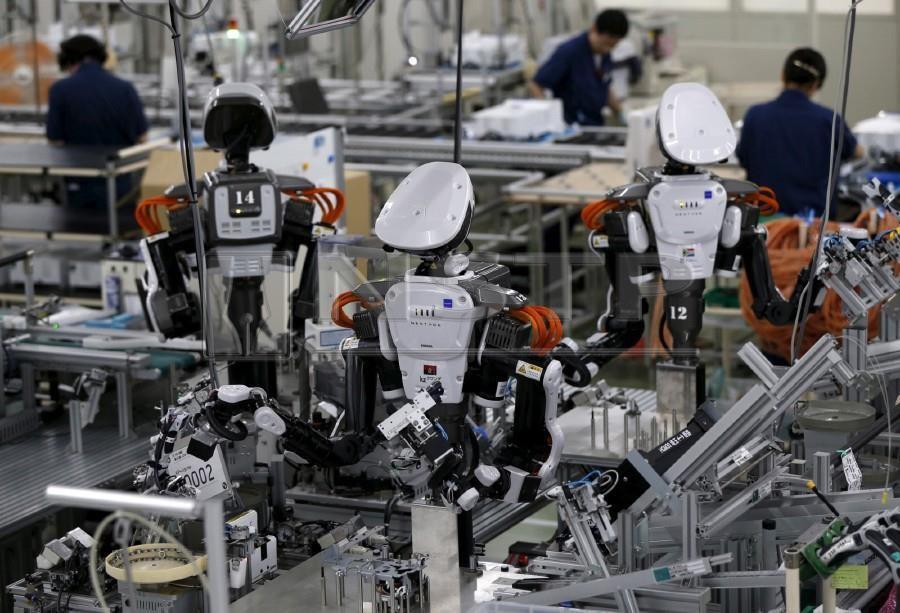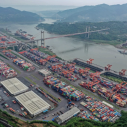Is the Global Talent Competition Distorting Local Labor Policies?
archive


Job fair targeting refugee asylum seekers in Vienna, Austria, January 2019. (Source: TheLocal.at)
Is the Global Talent Competition Distorting Local Labor Policies?
Rapid advances in the development of digital technologies together with the early 21st-century migration crisis are affecting national and global labor markets, generating considerable political and socio-economic tensions. The changing future of work is affecting both developed and less developed economies, if in different ways. One group of workers that is frequently discussed in this context is the so-called “talents,” or “high-skilled” workers. Exactly who these talents are has not been precisely defined, but they are generally understood to have a higher educational level or are regarded as highly creative, and thus have the greatest potential value in the labor market. These people appear to be the central actors in the narrative of future economies and the future of work, because innovation and creativity are considered the key drivers for economic development and growth. But what is actually going on globally? What are the main trends shaping the future of work, and what is the “Global Talent Competition”?
Recent concerns about technological progress focus on how susceptible jobs are to computerization and automation. One of the most cited papers on the subject is from Carl Frey & Michael Osborne,1 who created a theoretical model to predict whether a job can be replaced by automation. For them, creative intelligence, social intelligence, and manipulation tasks are so-called bottlenecks preventing the automation and computerization of jobs. This is not a matter of high-skill versus low-skill jobs, but rather of routine versus non-routine jobs. They predict that 47% of workers in the US could be replaced by computers and algorithms within the next 10-20 years. Nevertheless, we also know that concern about technological progress is not a recent phenomenon and throughout history, new technological developments have always been seen critically. Therefore, we need to consider that there are positive and negative dimensions of the interpretation of technological development. For example, a recent OECD Study2 based on the Survey of Adult Skills (PIAAC) of 32 different countries predicts that about 14% of jobs in the analyzed countries are highly automatable within a probability of over 70%.
Another concern about the future of work addresses the profound changes in global demography, which varies significantly across and within countries. In more developed regions like Europe, low fertility rates coupled with a continuous increase in longevity lead to an increased old-age dependency ratio and thus a dramatic decline in the share of working-age population. In less developed regions, still-high fertility rates coupled with decreasing infant mortality rates and rising life expectancy lead to an increase in the young and working-age population, which also contributes to migration towards more developed countries. Migration is not a new phenomenon. However, today‘s migrants within OECD countries are on average younger and more educated than locals.3 This puts pressure on local labor markets and intensifies public anxieties about immigration. Although developed societies are sorely in need of immigrant labor, political tensions are often driven by the growing competition for high-skill and higher-paying jobs.
In general, accelerating competition and the global supply of skilled workers is driven by increasing populations of secondary- and tertiary-educated people who grew up in less-developed socieites, and their rising educational aspirations. Persons with a tertiary education have a higher propensity to emigrate. The resulting mobility of skilled workers may increase the productivity of all workers and attract more foreign workers at all skill levels, and also foster a certain sociocultural environment in which cities are the centers of gravity. There has also been an increase of selective migration policies regarding the regulation of (high-)skilled migration, with traditional migration countries—such as the USA, Australia, and Canada—trying to attract skilled migrants, while countries such as China or India are now actively trying to retain, and in some cases repatriate, their homegrown talent.
...today‘s migrants within OECD countries are on average younger and more educated than locals. This puts pressure on local labor markets and intensifies public anxieties about immigration.
In relation to other OECD countries, EU Member States tend to have a larger number of migrants coming from other EU countries than from non EU-countries. A large part of the foreign-born population (37% in 2010-2011) was in fact born in another EU Member State.4 While Spain, France, and the UK mainly attract non-European migrants, Germany and Austria have a large proportion of migrants from other European countries. To establish more attractive entry and residence conditions for high-skilled third country nationals, the Blue Card Directive (Directive 2009/50/EC) was approved in 2009. A “directive” is a legal act of the European Union requiring Member States to achieve a result, setting only a minimum of standards. The EU Blue Card is a work- and residence permit for non-EU/EEA nationals. In this case, the Blue Card provides an additional scheme to attract high-skilled immigrants from non-EU countries. In many cases, a highly qualified immigrant has the choice of entering Europe with a permit issued by a member country according to its own rules, or with the European Blue Card. But although the number of Blue Cards has steadily increased since 2012 (Germany remains the primary destination country), many Member States (e.g. the Netherlands, France, Spain) prefer recruiting high-skilled migrants through their national policies; and because the directive isn't obligatory, a Member State may decide the number of admitted persons according to its own jurisdiction and differing national requirements and conditions.5

Sample EU 'Blue Card' (source: Wikimedia Commons)
Skills mismatch vs. skills shortage?
These trends in technological and demographic development create considerable uncertainty as well as potential benefits in the labor market, with profound implications and disparities. One consequence is the overestimated “skills shortage,” which in many cases is simply a skills mismatch. There are different measures of skills mismatch, and countries differ widely. It can be measured at the individual level (vertical or horizontal mismatch) or at firm-level aggregate (skills gap, skill shortages). Vertical mismatch arises when workers have a higher or lower education than that required by their job.6 Horizontal mismatch arises when workers are employed in a different field from their specialization.
In fact, the latter is a more important issue than the overestimated skills shortage, since there are many highly-trained workers that don’t have access to the jobs they want in the places they live or want to live. A further important aspect is job polarization: in general, in more developed countries the number of high- and low-paying jobs are growing fastest, often at the expense of middle-wage jobs. This is happening both in the USA and in Europe. Workplace segregation by skills is another phenomenon linked to qualification-related structural change that has not received much attention. Labor demand is increasingly divided into firms (and regions) hiring predominantly low skilled workers, on the one hand, and knowledge-intensive industries recruiting those with high skills on the other. This can lead to an increasing employment and attraction of talent in economic centers (cities) and a decrease of employment and high skilled workers in structurally weak regions.
These trends in technological and demographic development create considerable uncertainty as well as potential benefits in the labor market, with profound implications and disparities.
This leads finally to the rural-urban divide: 55% of the world’s population lives in urban areas (74% in Europe), and the proportion is expected to increase to 68% by 2050.7 Cities play an important role in attracting talented and creative workers, and the clustering of talented people can be seen as a positive effect since the productivity of the “creative class” increases under conditions of agglomeration and thereby contributes to regional economic growth. On the other hand, “global cities” create new inequalities. Rather than elevating the income and welfare of the whole population, they tend to exacerbate the rural-urban gap within countries and regions, as well as worldwide.
One brief example highlights some of these dynamics. South Tyrol, Italy, is a small rural area and European region situated in the middle of the Alps. It has the highest GDP/capita in Italy (and Europe), an unemployment rate of 2.9% (2018), and a very high quality of life, according to OECD measures. The region started a Talent Attraction and Retention Program in 2015 because of the general perception that it was beginning to suffer from a shortage of high-skilled workers. However, South Tyrol is actually suffering a labor shortage in service sector and low-skilled positions due to the region’s strong and dominant tourism and agricultural industries. How does this reflect labor/skills dynamics at a bigger European or global level? Is there really a high-skilled labor shortage and actual talent competition, or does the problem lie somewhere else? Is it a matter of shortage or mismatch? Would it be better for the government to engage in the global competition for “talented” workers, or instead aim to serve the needs of resident industries and populations?
We have seen that, at a global level, the main trends shaping the future of work are technological and demographic development. In terms of migration, Europe has complicated regulations, and there is rising and widespread political tension around issues of migration (independent of skills). Increasingly anti-immigration policies discourage the emergence of a global labor market. In terms of education and training systems, there is a great focus on perceived shortages in so-called STEM fields (Science, Technology, Engineering, Mathematics). However, little evidence supports the idea of a STEM shortage or, in general, of shortages of high-skilled workers in industrialized countries. The problem seems to be an oversupply of high-skilled jobs and a general pattern of over-education, emphasized because of the Global Talent Competition.
What is needed, therefore, is an evidence-based politics that can more accurately assess future developments that will affect regions. The place to focus is demographic change and increasing inequalities at different levels.

Photo credit: Issei Kato/Reuters
1. Frey, C. & Osborne, M., (2017). "The future of employment: How susceptible are jobs to computerisation?," Technological Forecasting and Social Change, Elsevier, vol. 114(C), pp. 254-280.
2. Nedelkoska, L. et G. Quintini (2018), “Automation, skills use and training,” Documents de travail de l'OCDE sur les questions sociales, l'emploi et les migrations, n° 202, Éditions OCDE, Paris, https://doi.org/10.1787/2e2f4eea-en
3. Czaika, M. (2018). High-Skilled Migration: Drivers and Policies (1st ed.). Oxford: Oxford University Press.
4. OECD (2016), "How attractive is the European Union to skilled migrants?," in Recruiting Immigrant Workers: Europe 2016, OECD Publishing, Paris, https://doi.org/10.1787/9789264257290-5-en
5. "European high-skilled migration policy: trends and challenges" (2018), in M. Czaika (ed.), High-Skilled Migration: Drivers and Policies, Oxford: Oxford University Press.
6. McGuinness, Seamus and Pouliakas, Konstantinos and Redmond, Paul, “Skills Mismatch: Concepts, Measurement and Policy Approaches” (September 2018). Journal of Economic Surveys, Vol. 32, Issue 4, pp. 985-1015, 2018. Available at SSRN: https://ssrn.com/abstract=3233257 or http://dx.doi.org/10.1111/joes.12254
7. UN World Urbanization Prospects, 2018



